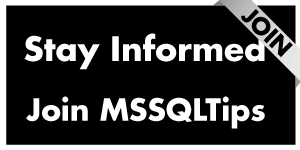SQL Server Encryption Tips
Solve your SQL Server Encryption issues with these valuable tips, tutorials, how-to's, scripts, and more for SQL Server Developers.
No Records Found
| Title | Speaker |
|---|---|
| Easily Encrypt SQL Server Databases and Backups - All Versions and Editions | David Stonehill |
| Secure, Simple and Affordable SQL Server Database Encryption | Jeremy Kadlec |
| SQL Server Transparent Data Encryption Alternative from DBDefence | Jeremy Kadlec |
